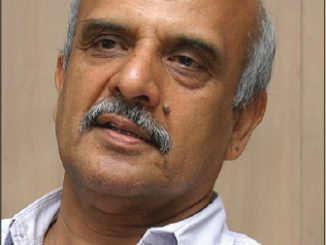
The rapid increase in renewable energy generation and its integration, ageing infrastructure and synchronisation of regional grids with the national grid have put enormous pressure on system operators to maintain grid stability and reliability. Further, the emergence of novel paradigms such as decentralised generation systems, net metering, energy storage, electric vehicles (EVs) and associated charging infrastructure are changing the structural architecture of the sector. The evolving power sector requires effective and evolved network management strategies.
Utilities are thus increasingly looking at the adoption of digital solutions and software to help manage their networks, restore outages faster, respond to faults swiftly and manage distributed energy generation sources in the most efficient and economical way. With proper network monitoring and management tools and solutions, utilities can start optimising their networks in real time and get a complete picture of their networks. Various artificial intelligence, machine learning, big data analytics and predictive maintenance tools are also emerging in this space.
Power Line takes a look at the emerging utility requirements and highlights solutions for network management…
Emerging utility requirements
There has been an increased thrust on renewables, driven by the country’s commitment at the COP26 summit to achieve net zero emissions by 2070 and augment non-fossil fuel power capacity to 500 GW by 2030. The technical challenges in the integration of such a large renewable energy capacity include intermittency, variability and unpredictability of renewable energy, which are expected to pose challenges to grid operators in terms of forecasting and meeting the load.
Additionally, in the coming years, a rise in the installation of rooftop will create more prosumers willing to sell electricity to the grid during the day and withdraw electricity during off-peak hours. Electricity flows will also become increasingly complex over time with the growth of decentralised generation.
Further, in the backdrop of the Faster Adoption and Manufacturing of Electric Vehicles in India (FAME) scheme, EVs have gained traction. With increasing EV sales, the proliferation of EV charging infrastructure and battery storage solutions is increasing. In recent months, several discoms have pursued EV charging projects across India. This necessitates the optimisation of electricity consumption and grid balance. Failure to manage the network in line with these emerging requirements could lead to grid instability, power shortages and blackouts.
In the distribution segment, issues such as theft and pilferage, meter tampering, high technical and commercial losses, and unsustainable financial operations create an increased need for network management. With growing competitive environment, there is a need for distribution utilities to adopt effective network management strategies. This will not only ensure 24×7 supply of reliable and good quality electricity at a reasonable rate to consumers, but also help in loss reduction. Moreover, modernising the distribution network by introducing technologies can help with demand-side management as well as revenue protection.
Solutions for network management
Transmission and distribution (T&D) utilities are focusing on deploying equipment with lower right-of-way requirements and the ability to ensure greater safety in operations. For instance, underground cables and covered overhead conductors such as XLPE conductors and aerial bunched cables are being preferred to conventional cables. In addition, the uptake of dry-type and K-class fluid-filled transformers has increased as they are associated with lower failure rates, offer better protection against fire hazards, have reduced/no risk of leakage of insulation fluids, and entail minimal maintenance.
Remote monitoring systems have also been installed to capture data on system availability, tripping, outages, etc., in a granular way, to supervise the system and respond to situations in a fraction of a second. In 2021-22, Power Grid Corporation of India Limited (Powergrid) integrated 22 additional extra-high voltage substations into its national transmission asset management centre (NTAMC) in Manesar, Haryana, for remote operation, taking the total tally of remotely managed substations to 264. It has also set up regional transmission asset management centres at various locations across the country for effective monitoring and management of transmission assets.
Investing in digitalisation and communications technology is crucial for the integration of renewables because data can help in optimising operational and capital expenditures. Digitalisation can enable increased visibility of the grid, data use from sensors to identify faults, and faster remote operations. It can also help in maintenance, network extension and improvement of supply quality, with respect to not only electricity but also customer communications and billing. Smart meters, intelligent electronic devices, internet of things sensors and control and automation software are critical components of digital solutions.
Given the rapidly developing energy market and national policies oriented towards grid digitalisation and modernisation, the deployment of smart grids is gaining traction in a big way. Smart grids can ensure environmental sustainability and limit carbon emissions through greater use of renewables and can help utilities by improving distributed generation and demand response. Further, they can improve reliability, increase asset utilisation and deal with ageing infrastructure. Communication technology also plays a key role. Today, communication can be based on a dedicated network owned by utilities, for example, supervisory control and data acquisition (SCADA) systems. A SCADA system improves the operation of processes, leads to energy savings due to optimisation of network operations and improves system safety.
Distribution utilities are adopting advanced distribution management systems (ADMS) in a big way. It supports the full suite of distribution, management and optimisation, and includes functions that automate outage restoration and optimise distribution grid performance. ADMS functions include fault location, isolation and restoration; volt/ volt ampere reactive optimisation; conservation through voltage reduction; peak demand management; and support for microgrids and EVs.
Further, smart meters can provide real-time consumption data and can assist discoms in reducing high aggregate technical and commercial losses due to fraud and theft. Smart meters can bring a greater degree of accountability and transparency into the system. Also, daily energy reads enable daily energy audits to identify loss-making feeders and quickly take corrective action. Smart metering also gives the additional benefit of all data being available at one central location, without manual intervention.
In the transmission segment, the deployment of digital substations is gaining popularity as these integrate real-time data into the system, thereby reducing downtime and enhancing diagnostics. They also incorporate intelligent electronic devices with integrated information and communication technology, non-conventional instrument transformers, merging units and phasor measurement units (PMUs). In recent times, the wide area monitoring system (WAMS) has emerged as an efficient solution for addressing reliability and operational concerns in power supply. Powergrid is carrying out the installation of PMUs on extra-high voltage substations on a pan-Indian basis, integrated with control centres for WAMS and real-time monitoring of grid parameters. Further, utilities are also adopting flexible AC transmission systems (FACTS) to tame the challenges of energy transition by providing reactive power support, increasing the reliability of AC grids and boosting power transmission capacity. For instance, Powergrid has installed static synchronous compensators in the 400 kV grid to improve grid reliability and voltage stability limit at multiple locations.
Battery energy storage system (BESS) is another emerging technology that can prove useful in combating the challenges posed by integrating intermittent generation sources into the grid. A BESS installed on the distribution side helps in balancing load and improving reliability and quality. In August 2022, the Solar Energy Corporation of India awarded the tender for setting up 500 MW per 1,000 MWh of stand alone BESS to JSW Renew Energy Five Limited, JSW Energy Limited’s special purpose vehicle. The project will provide discoms with storage facilities to be used on an on-demand basis.
O&M of T&D network
Operations and maintenance (O&M) of T&D assets can enhance their useful life. Such strategies focus primarily on condition assessment, refurbishment, replacement of assets, maintenance management and adoption of technologies for extending an asset’s life. An approach such as run to failure, also known as reactive maintenance or breakdown repair, is needed when the equipment is redundant and can be replaced immediately. Usage-based maintenance is based on the usage of equipment and the equipment can be overhauled after certain operations. Meanwhile, condition-based maintenance involves maintenance based on the actual condition of the equipment. This approach is ideal in cases where a measurable parameter, capable of being a good indicator for impending problems; exists. Reliability-centred maintenance is gaining prominence and it deals with individual maintenance plans for each asset, depending on their criticality and importance to grid operations.
Utilities are continuously making efforts to maintain high standards of availability and reliability of their transmission systems through the use of the latest maintenance practices. For example, Powergrid has deployed software tools and an online transformer condition monitoring system at the NTAMC and RTAMC.
Several transmission line and tower maintenance practices, including patrolling, have gained traction over time. At the ground level, the use of GPS-enabled applications and high resolution cameras is beneficial whereas at the aerial level, helicopters, drones and GIS mapping are preferred. Powergrid’s PG DARPAN (Powergrid Digital Application for Routine Patrolling and Assessment of Network) app has made it easier to geographically map transmission line towers for better asset management.
Issues and the way ahead
The key issues in the adoption of technologies by T&D utilities for network management include their financial viability and cost-benefit analysis. Further, uncertainties with respect to regulatory issues and approval of capital expenditure to pass on to consumers also pose hindrances to their easy adoption.
In the coming years, rising renewable capacity will necessitate simultaneous investments in the T&D sector, so as to upgrade it and incorporate smart technologies in order to facilitate volatile, intermittent and bidirectional flow of electricity. As utilities reinvent and revise their technology strategies, cybersecurity and data protection will also assume greater significance, going forward.



